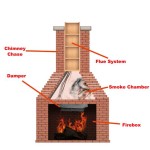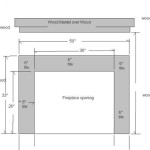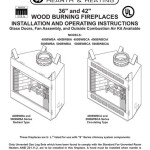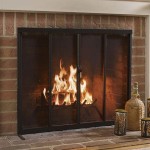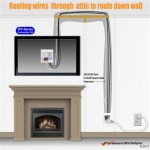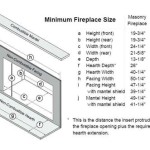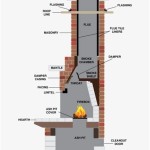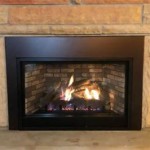Understanding Gas Fireplace Venting: What You Need to Know About Outdoor Terminations
Gas fireplaces offer a convenient and aesthetically pleasing alternative to traditional wood-burning fireplaces. Their ease of use and relatively clean operation have made them a popular choice for homeowners seeking supplemental heating and ambiance. A crucial aspect of gas fireplace installation and functionality, often overlooked, is the venting system. Proper venting is essential for safely removing combustion byproducts from the home and ensuring the fireplace operates efficiently. The external termination point of the vent plays a significant role in this process.
The venting system for a gas fireplace differs significantly from that of a wood-burning fireplace. Wood-burning fireplaces require a large chimney to draw smoke and gases upwards, relying on natural draft. Gas fireplaces, on the other hand, utilize smaller diameter venting pipes and can often employ either natural or forced-air systems, depending on the specific model. Understanding the different types of gas fireplace venting and the importance of proper outdoor termination is paramount for safe and efficient operation.
Types of Gas Fireplace Venting Systems
Several types of venting systems are commonly used for gas fireplaces, each with its own specifications and requirements for outdoor termination. The most common types include direct vent, B-vent, and vent-free (although vent-free are not actually vented to the outside). Each relies on a different mechanism for exhausting combustion byproducts.
Direct Vent: Direct vent systems are considered the safest and most efficient option. They draw combustion air from outside the house through one pipe and exhaust combustion products back outside through a separate, concentric pipe. This sealed system eliminates the need for an open chimney and prevents indoor air from being used for combustion. Direct vent fireplaces are incredibly versatile and can be vented horizontally through a wall or vertically through the roof. The outdoor termination for direct vent systems must adhere to strict clearance requirements from windows, doors, and other openings to prevent re-entry of flue gases into the building.
B-Vent: B-vent systems are designed for natural draft appliances. They rely on the buoyancy of hot gases to rise and exit the building. B-venting utilizes double-walled metal pipes and is typically used for natural gas fireplaces that are designed to use room air for combustion. Due to their reliance on natural draft, B-vent systems require a vertical rise and terminate above the roof. The termination point needs to be positioned to avoid downdrafts and ensure proper venting, often necessitating specific height requirements based on roof pitch and nearby obstructions. B-vent systems are generally less efficient than direct vent systems as they draw heated air from the room.
Vent-Free: Despite the name, vent-free fireplaces are not actually vented to the outside. They are designed to burn gas so completely that they produce minimal emissions. These models incorporate oxygen depletion sensors (ODS) that shut off the gas supply if oxygen levels in the room drop too low. While convenient, vent-free fireplaces are not recommended for prolonged use or poorly ventilated spaces due to the potential for carbon monoxide buildup and increased humidity levels. Due to their reliance on indoor air for combustion and the potential for indoor pollution, vent-free fireplaces are prohibited in some jurisdictions and should be used with extreme caution.
Importance of Proper Outdoor Vent Termination
The outdoor termination of a gas fireplace vent is a critical component of the overall system. A properly installed and maintained termination point ensures the safe and efficient removal of combustion byproducts, preventing them from entering the home and potentially causing health problems. An improper termination, on the other hand, can lead to a variety of issues, including carbon monoxide poisoning, inefficient fireplace operation, and damage to the building.
The primary function of the outdoor vent termination is to safely exhaust carbon dioxide, water vapor, and trace amounts of other combustion gases like carbon monoxide. If the termination is blocked or improperly located, these gases can be drawn back into the house, potentially posing a serious health risk. Carbon monoxide is a colorless, odorless gas that can be lethal in high concentrations. Symptoms of carbon monoxide poisoning include headache, dizziness, nausea, and confusion. It's crucial that the termination point meets all local codes and manufacturer's specifications to mitigate this risk.
Beyond safety, the location and design of the outdoor termination also impact fireplace efficiency. A poorly positioned termination can be susceptible to downdrafts, which can impede the flow of exhaust gases and cause the fireplace to burn less efficiently. This can result in increased fuel consumption and reduced heating output. Furthermore, a termination point located too close to vegetation or other flammable materials can pose a fire hazard. Therefore, careful consideration must be given to the surrounding environment when determining the optimal location for the vent termination.
Key Considerations for Vent Termination Location and Installation
Several critical factors must be considered when determining the location and installation of a gas fireplace vent termination. These factors include local building codes, manufacturer's instructions, proximity to openings, and the surrounding environment. Ignoring these considerations can result in unsafe operating conditions and potential code violations.
Adherence to Codes and Standards: Local building codes and manufacturer’s installation instructions dictate the minimum clearance requirements for vent terminations. These codes typically specify the distance the termination must be from windows, doors, air intakes, and other openings. Compliance with these codes ensures that flue gases are properly dispersed and do not reenter the building. It is crucial to consult with a qualified professional and obtain any necessary permits before installing a gas fireplace venting system.
Proximity to Openings: The location of the vent termination relative to windows, doors, and air intakes is a critical safety consideration. Termination points must be sufficiently far from these openings to prevent flue gases from being drawn back into the house. The specific distance requirements vary depending on the type of venting system and local codes, but typically range from several feet to several yards. It's important to carefully assess the prevailing wind patterns in the area to ensure that flue gases are not directed towards these openings.
Environmental Factors: The surrounding environment also plays a crucial role in determining the optimal location for the vent termination. The termination should be positioned away from vegetation, overhanging structures, and other potential obstructions that could impede airflow. In areas with heavy snowfall, the termination should be elevated to prevent blockage. Furthermore, the termination should be located in a way that minimizes the aesthetic impact on the building and surrounding landscape. Consulting with a qualified professional can help ensure that the vent termination is installed in a safe, efficient, and aesthetically pleasing manner.
Gas Fireplace Venting Explained Heatilator
Gas Fireplace Venting Explained Heat Glo

Fireplace Cover To Keep Cold Air Out
Gas Fireplace Venting Explained Heat Glo

Benefits Of Direct Vent Fireplaces

What Are The Best Ways To Vent A Gas Fireplace Zoroast

Vented Vs B Vent Direct Free Dixie S
Direct Vent Fireplace Is Melting Our Siding And Soffit Would Love Your Advice Hearth Com Forums Home

What Is A Direct Vent Fireplace Fireplaces Learning Center
Direct Vent Fireplace Is Melting Our Siding And Soffit Would Love Your Advice Hearth Com Forums Home
Related Posts

